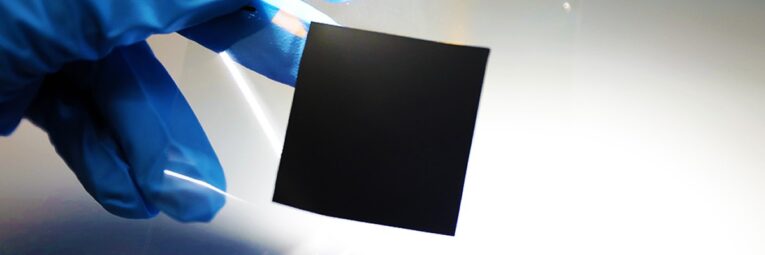
Blog

CCM-MEA in Proton Exchange Membrane Fuel Cell
The CCM-type MEA is the core component of PEMFC, first coat both sides of proton exchange membrane (PEM) with a catalyst layer (CL), and then press the anode/cathode gas diffusion layer (GDL) on two sides of ion exchange membrane to manufacture membrane electrode assembly. Therefore, this type of MEA is also known as catalyst-coated membrane. This production process overcomes many shortcomings of GDE membrane electrodes, improve the conductivity of MEA while reduce the impedance between CL and the perfluorosulfonic acid membrane. The second-generation CCM process technology has gradually become the mainstream commercial preparing method for membrane electrodes, and broadly used across the globe.
CCM-type MEA Preparation Methods
The cathode and anode catalyst slurry can be concocted according to a certain proportion, Nafion solution or PTFE solution can be used as binder, and then add dispersant can be added, use ultrasonic or mechanical mixing dispersion equipment to stir well. During this process, pay more attention to control the platinum loading, stirring time and temperature to obtain porous, moderate viscosity, platinum uniformly distributed slurry, which is used to coat on both sides of PEM. Common coating methods include brush coating, ultrasonic spraying, electric spray, silk screen, transfer printing, electrochemical deposition, sputtering, coating, etc. Transfer printing and coating are widely used, such as double-side transfer printing, intermittent transfer printing, double-side coating, etc. After the catalyst is dried, the anode and cathode gas diffusion layers are hot pressed with catalyst-coated proton exchange membrane to form a membrane electrode. During the hot pressing process, Need to pay more attention to control temperature, time, and pressure.
Advantages of Catalyst Coated Membrane
1) The hot pressing process is not carried out between PEM and GDL, so a proton exchange membrane with lower thickness can be selected to save resin consumption and improve proton transmission efficiency.
2) The catalytic layer and PEM are more tightly bonded, less prone to delamination problems caused by different swelling capacity properties, while effectively reduce interface resistance. For the GDL/CL interface, the presence of a microporous layer ensures good interface contact without any poor contact issues.
3) Due to the use of core material of PEM as binder, the resistance between the CL and PEM can be reduced, which helps the diffusion of H ions in CL, improves the utilization efficiency of catalyst, reduces the loading of Pt precious metals, and significantly reduces costs.
4) Compared to GDE membrane electrode, Preparation process for CCM-type MEA enable a longer service life and has been broadly applied in Chinese manufacturer. It is currently a highly commercialized method for preparing PEMFC catalyst coated membrane electrodes.
Development of Membrane Electrode Assembly for PEMFC
Although CCM-type MEA has many advantages, there are still some shortcomings, such as unstable CL structure in reaction, easy detachment of Pt metal particles. In addition, there is no hydrophobic agent in catalytic layer, and very few gas flow channels, which leads to unobstructed transmission for gas and liquid, and even result in the phenomenon of “flooding”. The thickness of catalytic layer must be made very thin to solve the problem of gas & water resistance. In addition, both GDE and CCM have disadvantages of high platinum loading and low catalyst utilization, which are caused by low transmission efficiency of gases, protons, electrons, and other substances in CL. It is necessary to build an efficient three-phase reaction zone to reduce electrochemical polarization losses. On the other hand, establish a porous and ordered three-dimensional structure to reduce the impact of concentration polarization, this will be the future research direction. Some foreign companies have developed mass-produced third-generation ordered MEA technology. At present, the internal researches still focus on manufacturing process of PEMFC catalyst coated membrane, especially in selection of core materials and continuous prduction technology. Some domestic membrane electrode assemblies have already approached international level, however there is a certain gap in some professional parameters such as Pt loading capacity, anti-reversal ability, etc. As an expensive raw material in fuel cells, the loading capacity of precious metal platinum in CL has a significant impact on the cost and industrialization scale of CCM-type MEA.
About Mr. Zhou
Search
Recent Posts
-
Manufacturing Process of Ca... 11/28/2024
-
Application of Flexible Gra... 05/14/2024
-
PEM Water Electrolysis for ... 04/12/2024
-
Application of Bipolar Memb... 01/09/2024
-
Membrane Electrode Assembly... 11/27/2023
Categories
- All Posts (24)
- Flow Battery (11)
- Battery Material (20)
- Bipolar Plate (13)
- Membrane (3)
- Felt Electrode (1)
- MEA (3)
- Fuel Cell (5)
Contact Info.
Recent Post
-
Manufacturing Process of Ca... 11/28/2024
-
Application of Flexible Gra... 05/14/2024
-
PEM Water Electrolysis for ... 04/12/2024
-
Application of Bipolar Memb... 01/09/2024
-
Membrane Electrode Assembly... 11/27/2023


